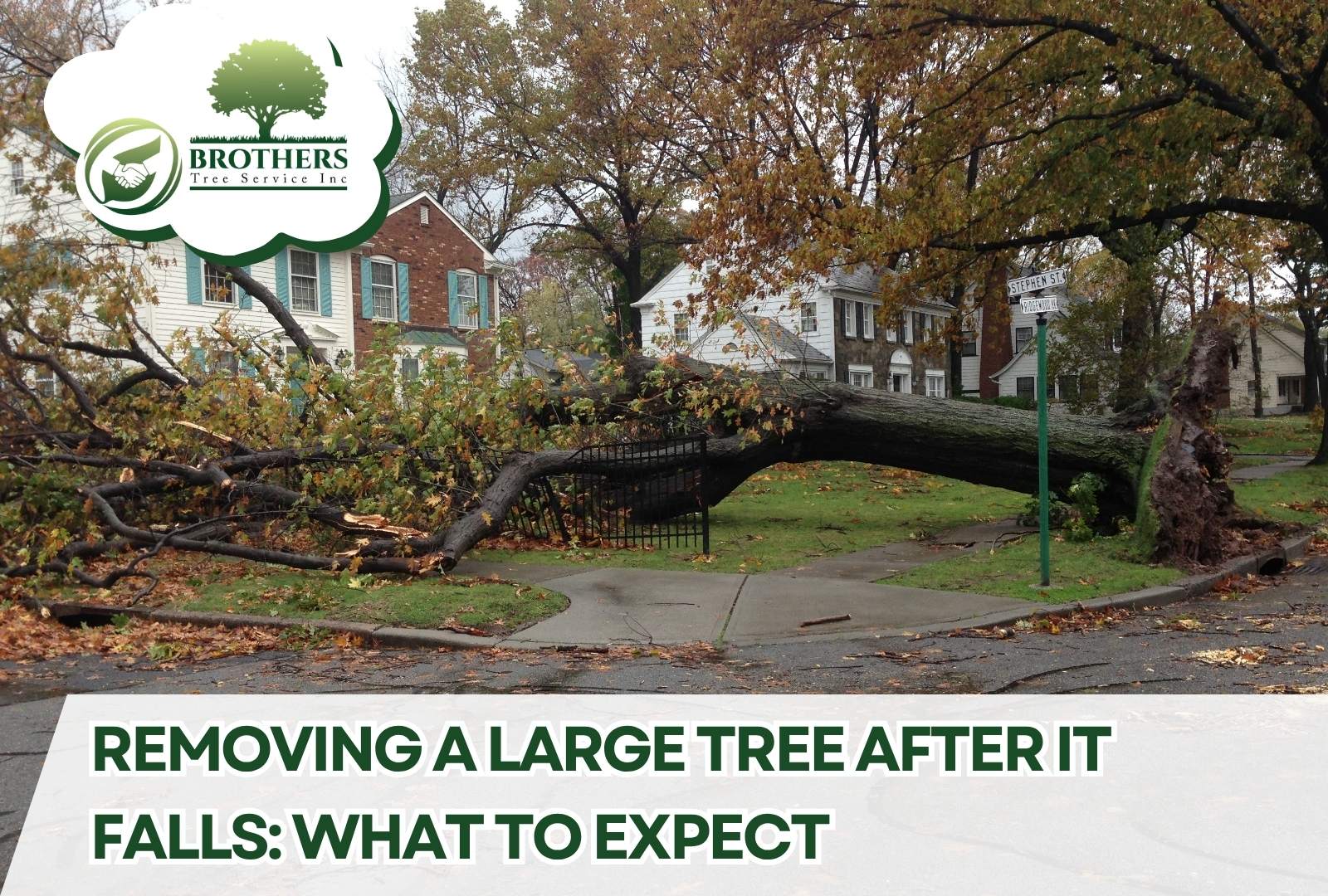
When a mature tree falls, it can cause serious damage, block access, and create dangerous conditions. Removing a large tree isn’t something you can take lightly. It requires careful planning, professional help, and an understanding of what affects the cleanup and removal process.
At Brother’s Tree Service INC, we help homeowners safely manage emergencies like this. This blog covers what to do after a large tree falls and what influences fallen tree removal cost, especially in high-risk situations.
First Steps After a Tree Comes Down
Your safety should always come first. If the fallen tree is near power lines, vehicles, or structures, stay at a safe distance and contact emergency services. Do not attempt to move branches or debris without help. For more guidance, our tree safety resource outlines how to assess your surroundings without putting yourself at risk.
After ensuring everyone is safe, take photos of the damage. These will be useful for insurance and for estimating cleanup needs. Avoid using chainsaws or climbing on the tree, especially if it’s lodged or leaning—it could shift without warning. Contact us now.
Once the area is secure, reach out to a qualified service like ours. We offer emergency tree removal with fast response, even for large and complex trees that require special equipment and trained crews.
Challenges of Removing a Large Tree
Large tree removals are more involved than small ones. Their size alone can create extra risks, especially if the tree is heavy, tangled in structures, or located in a hard-to-reach spot. These removals often require rigging systems, cranes, or sectional cutting to ensure safety.
Another major challenge is dealing with unstable limbs or a compromised root system. These trees can behave unpredictably. Our team follows tree removal safety tips and best practices to make sure no further damage occurs during the process.
What Affects Fallen Tree Removal Cost?
There’s no one-size-fits-all answer. The cost of removing a fallen tree—especially a large one—varies depending on its size, location, and complexity. A tree that has fallen cleanly in an open yard is easier to remove than one resting on a structure or tangled in power lines.
Timing also plays a role. Emergency calls during storms, nights, or weekends may involve faster deployment and more labor. The more risk and equipment involved, the more the overall removal process changes.
If you’re concerned a tree on your property may be unstable, learn to spot the signs a tree should be removed before it causes damage.
FAQs – Removing Large Trees
Can I remove a large fallen tree on my own?
No. Large trees require specific tools, safety equipment, and training. Improper handling can cause injury or additional property damage.
What if the tree didn’t fall completely, just partially?
Partially fallen trees are more dangerous due to the tension in their limbs. It’s best to avoid the area and let professionals assess it.
How long does it take to remove a large tree?
It depends on the complexity, but removals can range from a few hours to an entire day when large trees are involved.
Let Us Handle Your Tree Emergency
If you’re dealing with a tree that’s too big to manage alone, you don’t have to face it without support. Brother’s Tree Service INC specializes in removing large trees safely and efficiently. We provide expert crews, professional-grade equipment, and fast response times to help restore your property.
Need help now? Contact us or visit our emergency tree removal page to take the next step.
